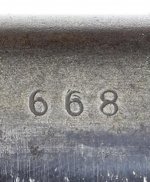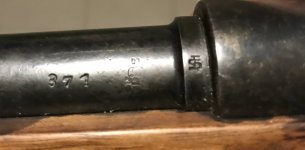I'd concur the barrels are most likely Gew98 barrels that were shortened. A few thoughts:
If you kill thousands of Gew98 rifles to be converted to K98k rifles, you break them into parts. The receivers were scrubbed, the stocks were shortened. So basically all useable parts were reused. Why then get NEW barrels made instead of reworking the barrels?
So assuming now you have thousands of barrels that were removed from the actions you are not likely to match them back to the actions, plus you anyway need to remove all potential Reichswehr ownership markings - right, you'd simply strip it of ALL markings by turning it down on the lathe. They anyway need to remove the front sight, remove the rear sight base, shorten the barrel and recrown the muzzle prior to being able to reinstall it on a rifle.
Plus then another thought: everyone else who had ever changed a barrel on a K98k can confirm this: the index for the barrels were individual fits. Which means the barrel blanks were installed and when installed then the rear and front sight were installed in position. Assuming if a company ONLY reworked barrels (or even when supplying new barrel blanks) they would never had been able to install the sights, because they would not know to which action they were fitted and therefore the sight installation would be off on nearly any rifle. I would not imagine the SS being unable to rework the barrel but being able to install the rear sights themselves, this is way too much work that does not make sense to split.
A proof for this is the fact that the symbols that we consider to be the performing companies sign (FS, HW, etc.) are nearly always in the same position. If they supplied barrels or barrel blanks only, this would be impossible. Otherwise we are to encounter SS rifles with the FS, HW, etc. on the right side or even under the wood. This therefore is a proof for the fact that they got stamped when the barrels were already installed.
Finally, we know from the SS DC sniper rifles the sniper conversion was outcarried by Waffenwerke Brünn, but the rifles were sent to the SS to be accepted (original documents proof this). If at a stage where the SS was way more important and way larger they didn't even outcarry the sniper conversion themselves, why would they do it at an earlier stage? It is more likely they did it the same way both times.













